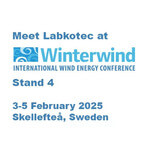04/30/2012
Future Technologies - Airborne "Kite" Wind Power - Makani's Contribution to The Future of our Planet I
MAKANIPOWER - AN INTRODUCTION TO A VERY UNIQUE WIND ENERGY COMPANY
(A) Why Airborne Wind Power?
Makani’s Airborne Wind Turbine (AWT) can create inexpensive energy, in more locations than traditional wind turbines, because it flies where the wind is stronger and more consistent.
The Makani AWT can transform wind power with the following benefits. It:
- produces power at up to half the cost of traditional wind turbines
- accesses the stronger and more consistent winds at altitude
- uses 90% less material than a conventional turbine, it is less expensive to build and install
- opens up large new areas of wind resource, including the vast resources offshore above deep water
- allows for deployment outside of visually or environmentally sensitive locations
The Makani AWT is also a practical solution because it:
- requires no more space than conventional turbines
- is capable of handling large, sudden shifts in wind speed and direction
- it has a redundant, fault tolerant design, and is
- lightning hardened
(B) How does Malani's Airborne Wind Power work?
Overview:
The Makani Airborne Wind Turbine (AWT) is a tethered wing outfitted with turbines. It flies between 250 and 600 meters (800 and 1,950 feet), where the wind is stronger and more consistent. Makani is currently developing a 600 kW AWT, for utility scale generation of power at a cost below current conventional solar and wind alternatives.
The Makani AWT operates like a wind turbine. Air moves across the turbine blades and forces these to rotate, which in return drives a generator to produce electricity.
Due to its speed, the tip of a conventional wind turbine blade is its most effective part and is responsible for the majority of energy produced in the process. The Makani AWT takes advantage of this principle by mounting small turbine/generator pairs on a wing that in itself acts like the tip of traditional turbine blade. The wing flies across the wind in vertical circles, fixed to the ground by a flexible tether.
Please refer to the follow-up press release "Future Technologies - Airborne Kite Wind Power - Makani's Contribution to The Future of our Planet II"
For more information on this article or if you would like to know more about what MAKANIPOWER does or how www.windfair.net can assist such unique startup companies, please do not hesitate to contact Trevor Sievert at ts@windfair.net
www.windfair.net is the largest international B2B Internet platform – ultimately designed for connecting wind energy enthusiasts and companies across the globe!
We Work With the "Who-Is-Who" of the International Wind Energy Community!
(A) Why Airborne Wind Power?
Makani’s Airborne Wind Turbine (AWT) can create inexpensive energy, in more locations than traditional wind turbines, because it flies where the wind is stronger and more consistent.
The Makani AWT can transform wind power with the following benefits. It:
- produces power at up to half the cost of traditional wind turbines
- accesses the stronger and more consistent winds at altitude
- uses 90% less material than a conventional turbine, it is less expensive to build and install
- opens up large new areas of wind resource, including the vast resources offshore above deep water
- allows for deployment outside of visually or environmentally sensitive locations
The Makani AWT is also a practical solution because it:
- requires no more space than conventional turbines
- is capable of handling large, sudden shifts in wind speed and direction
- it has a redundant, fault tolerant design, and is
- lightning hardened
(B) How does Malani's Airborne Wind Power work?
Overview:
The Makani Airborne Wind Turbine (AWT) is a tethered wing outfitted with turbines. It flies between 250 and 600 meters (800 and 1,950 feet), where the wind is stronger and more consistent. Makani is currently developing a 600 kW AWT, for utility scale generation of power at a cost below current conventional solar and wind alternatives.
The Makani AWT operates like a wind turbine. Air moves across the turbine blades and forces these to rotate, which in return drives a generator to produce electricity.
Due to its speed, the tip of a conventional wind turbine blade is its most effective part and is responsible for the majority of energy produced in the process. The Makani AWT takes advantage of this principle by mounting small turbine/generator pairs on a wing that in itself acts like the tip of traditional turbine blade. The wing flies across the wind in vertical circles, fixed to the ground by a flexible tether.
Please refer to the follow-up press release "Future Technologies - Airborne Kite Wind Power - Makani's Contribution to The Future of our Planet II"
For more information on this article or if you would like to know more about what MAKANIPOWER does or how www.windfair.net can assist such unique startup companies, please do not hesitate to contact Trevor Sievert at ts@windfair.net
www.windfair.net is the largest international B2B Internet platform – ultimately designed for connecting wind energy enthusiasts and companies across the globe!
We Work With the "Who-Is-Who" of the International Wind Energy Community!
- Source:
- MAKANIPOWER
- Author:
- Posted by Trevor Sievert, Online Editorial Journalist / Makani Staff
- Email:
- ts@windfair.net
- Link:
- www.windfair.net/...
- Keywords:
- MAKANIPOWER; wind, wind energy, wind turbine, rotorblade, awea, ewea, wind power, suppliers, manufacturerstrevor sievert






